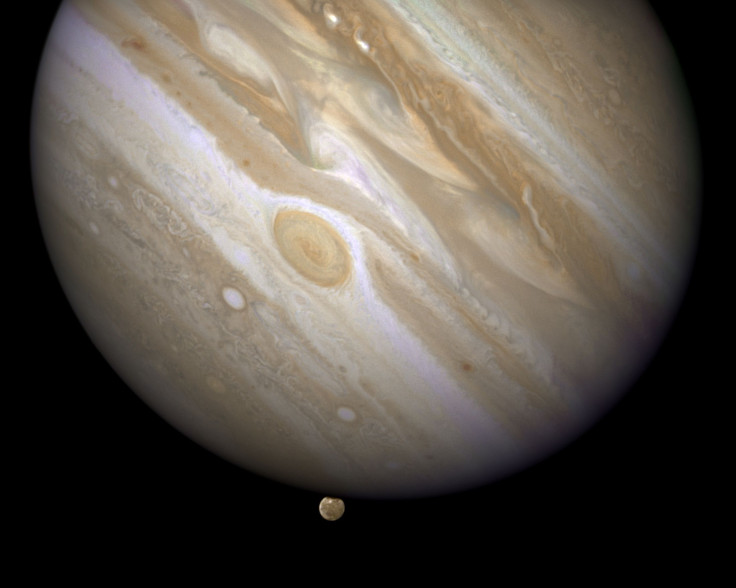Ammonia gas swirling below Jupiter's thick clouds; Scientists get clear glimpse of Jupiter’s atmosphere via upgraded radio telescope VLA

Using radio waves, scientists were able to get the clearest glimpse of what lies beneath Jupiter’s thick cloud tops. They found patterns of swirling ammonia mirroring those seen on the surface.
The researchers used the upgraded radio telescope in New Mexico called the Karl G Jansky Very Large Array (VLA) to gain insights into the gas giant’s atmosphere.
Below the gas giant’s enigmatic surface lies Jupiter’s famous Great Red Spot and other stormy surface features that extend for about 30 to 100 kilometres. The red spot is at least 100 kilometres thick, said radio astronomer professor Robert Sault from the University of Melbourne. The swirling ammonia suggests stormy weather that was captured by Voyager's 1979 encounter with Jupiter has deep roots.
The 1995 Galileo probe found massive amounts of ammonia on Jupiter, and Sault and his colleagues have zeroed-in on the ammonia in Jupiter. The ammonia absorbs the radio waves emitted by the planet. The astronomers, knowing this, were able to calculate the amount of ammonia in various parts of Jupiter’s atmosphere, down to 100 kilometres below the surface clouds.
The researchers were also able to find out the circulation and distribution of ammonia in the atmosphere. Previous radio studies were limited to analysing Jupiter’s properties at specific latitudes. However, the new study provides a more comprehensive and widespread view of the activities below the clouds. The radio maps showed ammonia-poor air sinking into the planet, very similar to how dry air descends from above the cloud layers on Earth.
The VLA detected a range of frequencies from Jupiter’s atmosphere and revealed a number of hotspots, states the press release. These are dry regions devoid of condensable gases and clouds, particularly opaque billows of ammonia. Data has suggested that the areas where ammonia is concentrated extend right up to the base of where Jupiter's clouds form. The rising ammonia swell up to form wave patterns. This signals a motion deep within the atmosphere.
The ammonia ice clouds that the Galileo probe detected could well be ammonia gas in the plumes condensing at higher altitudes. The findings will help researchers better understand the atmospheres of gas giants such as Jupiter ahead of July 4 arrival of NASA's Juno spacecraft.





















